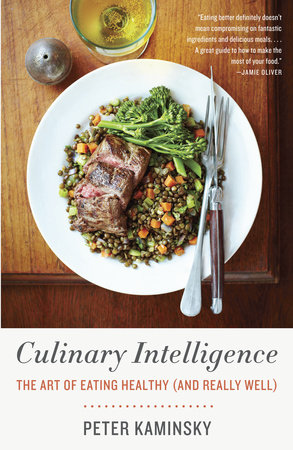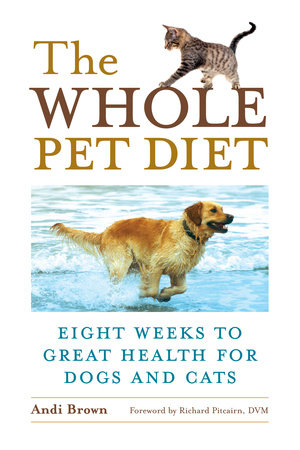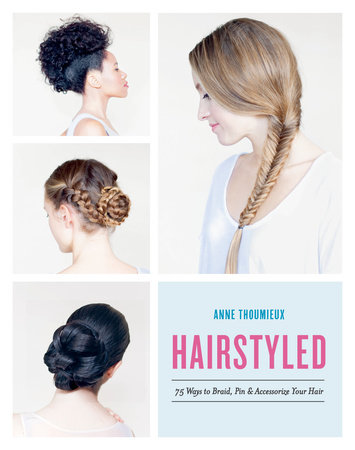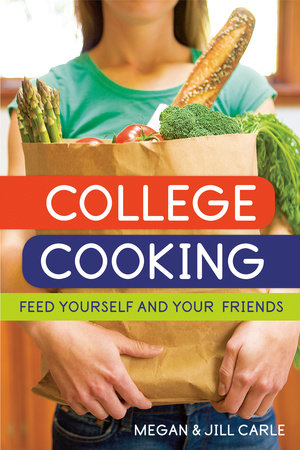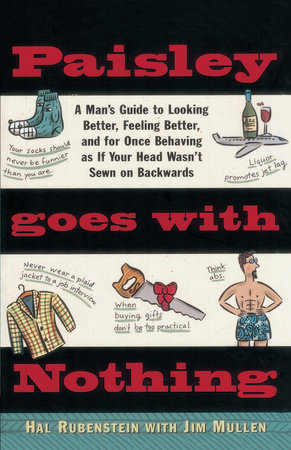A Conversation with
Peter Kaminsky
author of
CULINARY INTELLIGENCE
The Art of Eating Healthy (and Really Well)
Q: What inspired you to write CULINARY INTELLIGENCE?
A: My life insurance renewal was rejected because I was pre-diabetic. I had to lose weight and keep it off. Since I happen to make my living writing about food, I had to find a way to take weight off but continue to eat great food and drink good wine (great wine gets a little pricey for my pocketbook). I talked to chefs, nutrition experts, and, of course my mom. Bottom line, within a year I had lost 20 pounds. Six years later the weight has not come back. In fact I lost another 15 which puts me right in the center of the dial for Body Mass Index. Know what to eat and what not to eat, how often and how much: the basis of Culinary Intelligence. Once you get in the groove, it’s not that hard.
Q: How is CULINARY INTELLIGENCE different from other books about healthy eating? What new information will readers take away?
A: I wasn’t interested in writing a book that added my voice to those who preach that fast food is bad for you or that Big Agriculture is a problem for the environment. Both true, but we all know that already. One more book on those subjects isn’t going to change your eating habits. My goal has always been to maximize pleasure and satisfaction from food without eating things that challenge my waistline, tax my heart, and clog my arteries. This is not a diet book that starts by making you feel bad so that you eat better. This book is all about pursuing the pleasures of the table on the path to good health.
I don’t count calories, or points. I can barely balance a checkbook, let alone monitor my calorie balance. Instead I rely on the natural sense of taste that all of us are born with. It can guide you to what you ought to eat or avoid. Although being overweight was what impelled me to change my diet, if and when you are at a healthy weight Culinary Intelligence is your best guide to staying at a good weight while eating wholesome and satisfying food.
Q: You talk a lot about maximizing Flavor per Calorie. What do you mean by that?
A: I mean that if the fruits and vegetables that you eat are harvested in season from nearby farms you will be eating ingredients that are at their peak of flavor. They will satisfy you. So will free range animals and fish (hmmm…can you call fish free-range or is free-swimming better?). If you eat industrially raised ingredients that taste blah, then you will resort to lots of sugar, salt, and fat to make up for the flavor you are missing. Adding sugar, salt, and fat to almost everything we eat means we are consuming huge amounts of empty, health-threatening calories. To be totally accurate, salt contains no calories, but when combined with fat and/or sugar it makes you want to eat more.
To get the most FPC out of wholesome ingredients you also need to know how to cook (or live with someone who does). Home cooks are in control. In a restaurant the chef is in control and restaurants (even many of the best of them), fast food franchises, and take-out businesses all use sugar, salt, and fat in shock and awe quantities. If you get more FPC from quality ingredients and cook from scratch, you will be satisfied with fewer calories. But don’t take my word for it. Eat some free-range pork side by side with factory pork or local strawberries next to the gigantic puffballs that you see in every supermarket. The good stuff will make you go “Wow!” while the industrially produced ingredients will leave you unsatisfied. I promise.
Q: What are the three most important foods or ingredients to avoid?
A: Sugar, Refined (white) Flour, Trans Fats. That means I don’t drink soda, juice, (even natural fruit juices are mostly fruit sugar and water), or sport drinks. I pretty much stay away from candy bars, cake, cookies, or pastry. That doesn’t mean “never,” just not very often. Instead of starting out my day with a bagel or a piece of Danish, I find that whole grain bread or cereal, oatmeal, or eggs satisfy and ward off hunger pangs. I look at labels and if the first ingredient in a product with flour is wheat flour—that is, it doesn’t say “whole wheat” I skip it. Your body reads white flour as sugar. Pizza is white flour and cheese with a bit of tomato—mucho calorico. I used to eat a slice every day (real world translation: I ate two slices every day). That’s many hundreds of calories. Pizza is now in the special treat category (every couple of weeks).
Bottom line, avoid these three ingredients to the best of your ability and you will find that weight comes off and stays off. Okay, so suppose a hamburger is the healthiest practical choice? After all, no one salivates at the prospect of a soggy, refrigerated whole wheat and tofu wrap. Get a burger, take off the top or bottom bun and eat it as an open face sandwich.
Q: What are the most important things to know about buying organic/seasonal/locally grown food? Can these items be purchased on a budget?
A: When things are in season they are cheaper. They taste better. They need less flavor enhancing and fattening sugar and fat to make them palatable. You are not getting the passed along costs of fuel to transport the ingredients over hundreds of miles, to store them, to package them, to treat them with chemical preservative or flavor enhancers. Broccoli straight from the farm tastes fresh and green (I count green as a taste though I can’t put my finger on what that taste is. I know it’s there). When it is packaged or picked early and trucked across the country, the flavor doesn’t compare. If you don’t smother it in cheese sauce it tastes pretty boring. For sure, by the time the Superbowl rolls around, such winter standbys as cabbage, kale, carrots—for example—have worn out their welcome. I’ll buy fruits and vegetables from the Sunbelt or South America.
As for organic—I guess I haven’t read convincing proof that they are better for you but common sense tells me that if one product is grown with a lot of chemicals, dosed with additives, and laced with growth hormones it is probably not doing my body or the environment any favors. As I write this, it occurs to me that the farms of James Madison, Thomas Jefferson, and George were all organic. Same goes for their meat products. In this as in so much else, the Founding Fathers get my vote: free range organic livestock and poultry tastes better, satisfies you quicker, and needs less dressing up with sugary and fatty sauces and gravies to make them palatable.
Having said all of this in favor of local, seasonal, and organic product—not every farmer’s market peach is created equal. Too many people think that once they have “voted” for organic and sustainable product that shopping requires no more thought. Big mistake. Different farmers will produce different product. You need to taste a sample if possible or at least engage the farmer in conversation to see if they have a convincing story. As more and more supermarkets start to stock local and organic product you might find that there is someone in the store who takes an interest in these products. Again ask for advice, see if you like the answers. Pretty soon you will learn who are the reliable farmers or merchants.
Q: Can you name a few dishes that every health-conscious home-cook should know how to make?
A: To be a great chef is hard, to be a good cook not nearly so. If you have great ingredients they will taste good. So the first rule is Don’t Screw It Up. Too many of us think that good cooking is about lots of exotic ingredients, shaking a lot of pans, and lots of flame-ups. I’ll put my grandma’s fried eggs and brown butter against any Iron Chef Recipe. Or my dad’s grilled flank steak, which was a backyard barbecue stand-by in our suburban tract house on a ¼ acre lot in northern New Jersey.
Once you know how to cook, recipes become secondary. You’ll know how to put a delicious crust on meat, how to make a pot of beans taste as succulent and flavorful as the best cassoulet, how to oven roast almost any vegetable in salt and olive oil. In this I am of a mind with Tamar Adler who wrote An Everlasting Meal: Cooking with Economy and Grace. It’s a wonderful argument for learning how to cook, rather than committing a lot of recipes to memory. If you have great ingredients, and practice your technique, they will speak to you. That’s all chefs mean when they say they have a “market driven menu.” They see what looks good and then they imagine a dish.
To those that argue that cooking takes too much time out of our busy days I have two simple words by way of an answer “It doesn’t”, not if you learn to enjoy cooking, not only for the sustenance it brings but as an activity that moves at its own pace and demands the kind of concentration that takes you away from the frenzy of the day into a quieter, more focused space.
But, yeah, it takes some time so why not do as I, and many other home cooks do? Always make sure you are making two or three meals work of food at one cooking session. This can be as simple as roasting two chickens instead of one. Likewise a frittata for four will feed two of you twice. Roasting vegetables is a superb way to capture and concentrate. Everyone should know how to pan roast a fish. For some reason many people are afraid of cooking fish, but fish is a more forgiving ingredient in many ways that meat; It’s done or it’s not, end of story. When it flakes it’s done.
At the end of Culinary Intelligence I offer fourteen basic recipes that exemplify this approach to cooking. It is not intended to be a cookbook, but, if you master these recipes and assimilate the feeling behind them, you can invent a lot of meals on your own. I do.
Q: You eat at many renowned restaurants where you have the opportunity to load up on heavy foods and rich desserts. Do you stick to your healthy eating goals when you’re out with friends and if so, how?
A: Easy on the breadbasket if they put one down shortly after seating you. Stay away from cocktails, or if you need that Martini, then lay off the wine and beer. It’s one or the other. I prefer two glasses of wine. Starting with a salad is a good way to get some volume in your stomach right away. Ask for oil and vinegar and steer clear of the balsamic dressings and crouton heavy salads. Order one appetizer per person and one entrée per two people. In this age of supersized portions a normal entrée would have fed two people in days gone by. Many people find it hard to skip dessert at a restaurant meal and trying to do this can make you break out in a stress-induced rash. If that describes you, order one dessert per two or three people and, contrary to what thousands of generations of mothers have begged their picky offspring, when it comes to dessert, don’t finish everything on your plate. Actually, if its just my wife and me, we skip dessert.
Q: Eating on the road is always dangerous. How do you handle that?
A: It’s not always easy. When the only choices are fast food franchises or gas station quik-marts, I fill up at the gas station. Apples are a good bet even if they are not locally in season. They fill you up; they have pleasing crunch: they are sweet but have plenty of fiber so the sugar doesn’t go straight to your blood stream. Nuts—high in protein and “good” fat—are another of my go-to road foods. Plain yogurt with some nuts and dried fruit thrown in is a good choice (or if all they have is fruit flavored yogurt, there is no law that says you have to stir in all of the sugary fruit flavoring on the bottom of the container). For breakfast a couple of eggs and whole wheat toast is hard to beat. Oatmeal too (hold the brown sugar).
Ethnic markets and restaurants usually have whole ingredients and made-from-scratch recipes. Wherever there are farms in America, it’s a good bet you are going to find some stores and little restaurants that have Latino food (because so many farm workers are of Latin heritage). I’ll take a homemade beef taco with fresh salsa over an off-ramp franchise cheeseburger any day. Airports are a food desert so apples, bananas, nuts are my failsafe there, although more airports are offering ungloppy pretty healthy choices lately. As for whatever they serve on an airplane, steer clear. It is always a big temptation on the road to reward yourself with huge desserts that you wouldn’t eat at home. Think again. When it comes to food, what happens on the road doesn’t stay on the road: your tight clothes are all the evidence you need.
Q: You mention that Mario Batali thinks a nice portion of pasta is what the Italians eat: 2 ounces! How can Americans begin to reform the way that they think about food and portion sizes?
A: When Mario told me that we both agreed that the two-ounce rule won’t cut it in America. We eat pasta as a main course. Italians eat it as an appetizer. If there are two of us eating I make a half-pound and make sure that vegetables take up as much space in the bowl as pasta. I used to hate whole grain pasta, but they have been making better ones in the last few years and it means less refined carbs. If you use strongly flavored ingredients such as anchovies, olives, even a little bacon—the whole grain stuff is a wonderful match.
The bigger issue is portion size. You will never see plates as overfilled with food in Europe or Asia. I’m not America-bashing here. We are amazingly productive in terms of food production. But that doesn’t mean you need a half-pound burger, a one-pound steak, four slices of pizza, two dozen fried shrimp. If you fill your plate, chances are you will clean your plate. Don’t do it. Don’t go back for seconds. I’ll admit this takes a little bit of will power but not the iron will of a Jedi Knight. If you don’t bring the meat platter to the table. If you go for salad instead of seconds. If you eat a lot of vegetables, you can be filled without overeating. Which gets me back to cooking. If the vegetables are the best you can get and nicely caramelized, or dressed well you stand a fighting chance. Boiled cabbage or overcooked carrots won’t do it.
Q: You write “You can exercise at the gym four days a week. You can pass up French fries, eat whole grain bread, organically raised chickens that are fed wild blueberries, and quinoa that is harvested after being blessed by an Inca priest, but every time you sit down in front of the TV with a bowl of chips, or settle into a seat at the movies with a box of Sour Patch Kids (I love them) you wreak havoc with your calorie balance sheet.” How can we learn to avoid temptations like chips and candy?
A: The best way I know how is don’t keep them in the house. It’s amazing how your natural inertia (mine too) will keep you anchored to your easy chair instead of trudging back to the store. Some nuts, fresh fruit, or a couple of squares of good dark chocolate will knock back your cravings.
Q: You’ve written cookbooks with everyone from Gray Kuntz to John Madden. Can you tell us about the “100,000 Calorie Tour” you took with Daniel Boulud?
A: That could be an understatement. The man has the metabolism of a gypsy moth! I had asked Daniel if I could accompany him on his next visit to his parent’s farm outside Lyon. I got my chance when he piggy-backed a tour of the great winemakers of Burgundy and the Rhone with a visit to the folks.
Our first meal was supposed to be at the late Bernard Loiseau’s 3 Star Michelin Restaurant in Northern Burgundy. If you have never had a three-star meal, basically the chef keeps sending out courses after you think you can’t eat another bite. As we drove to see Loiseau, Daniel decided we had to stop in at Marc Menaud’s Three Star resto. Sunday afternoon, the biggest day of the week for dining out. Menaud welcomed Daniel like royalty. We ate like kings and then we drove three hours to Loiseau. Daniel and his wine director Jean Luc joined me on an hour’s walk before dinner, but it would have taken a couple of marathons to work off all the foie gras, lobster, filet mignon, etc. We soldiered through Bernard’s meal. I seem to remember frog’s legs, carrots, and waiters hovering to see if we cleaned our plates (Daniel did. I didn’t)
And that was how the week went. Food, food, and more food. Big lunch, big dinner, lots of wine. The climax came with a visit to his parents. The whole family turned out. Freshly picked lettuce with equally fresh fromage blanc and garlic. Home baked bread. A lamb, or maybe it was a goat, or something of similar size with four legs. Daniel told them I was a very important writer which meant that the family kept filling my plate and, to be well-mannered I obliged by eating everything on it. I very clearly recall taking a sip of eau de viper, an alcoholic beverage made when a venomous snake is captured. The unlucky reptile is put into a wine bottle that is filled with some hard liquor and, a few years later you uncork it and have a sip. Because of the magnifying curvature of the glass, the snake’s head appears about five times as large as it really is. That’s an image you don’t want to wake up to! The effect reminded me of the psychedelics that made their way around campus in my college years.
It was at that point that Daniel revealed he had made a dinner reservation for us in Lyon. I couldn’t believe it! Neither could the rest of our traveling companions. So off we went to Lyon and, for the very first time, I saw Daniel unable to eat a full meal. We had a plate of red mullets. Daniel made some excuse and I survived.
